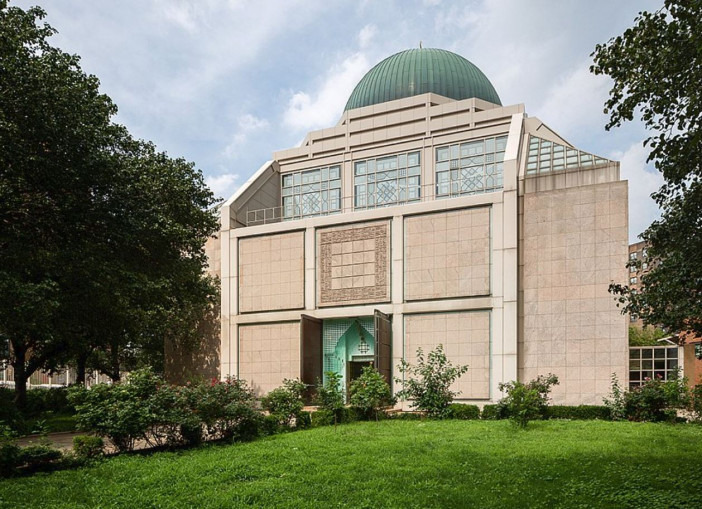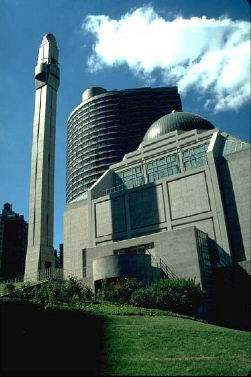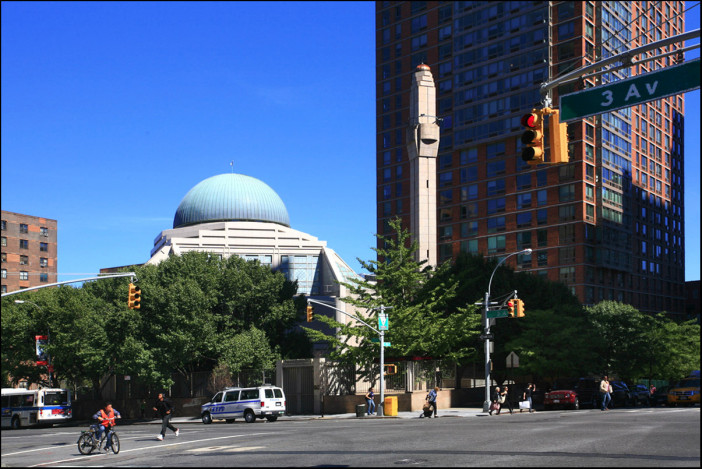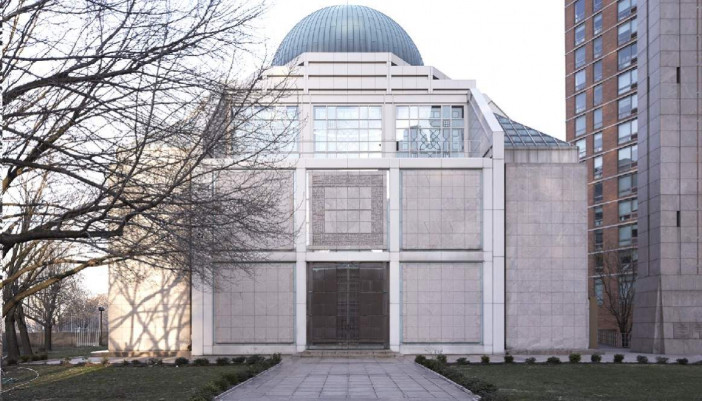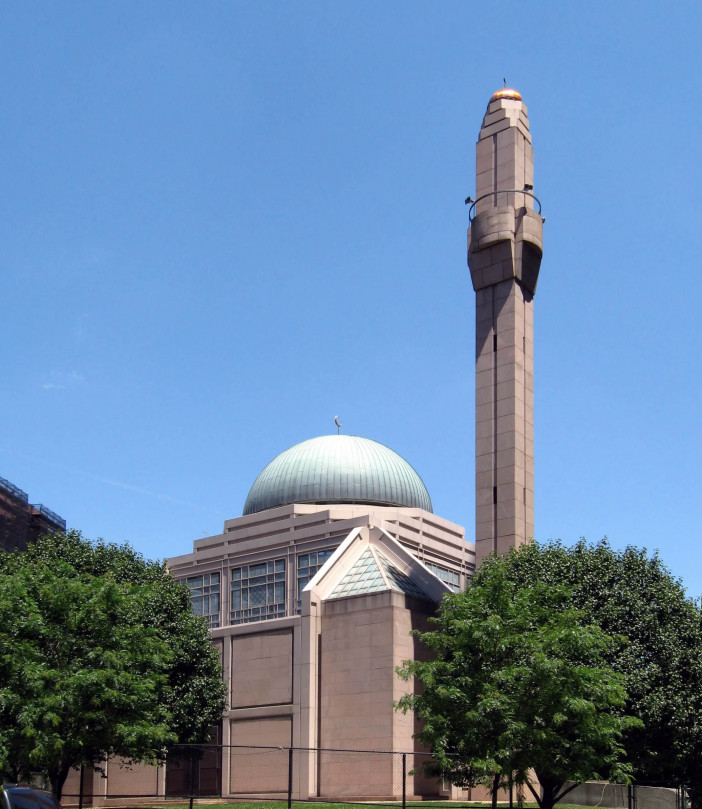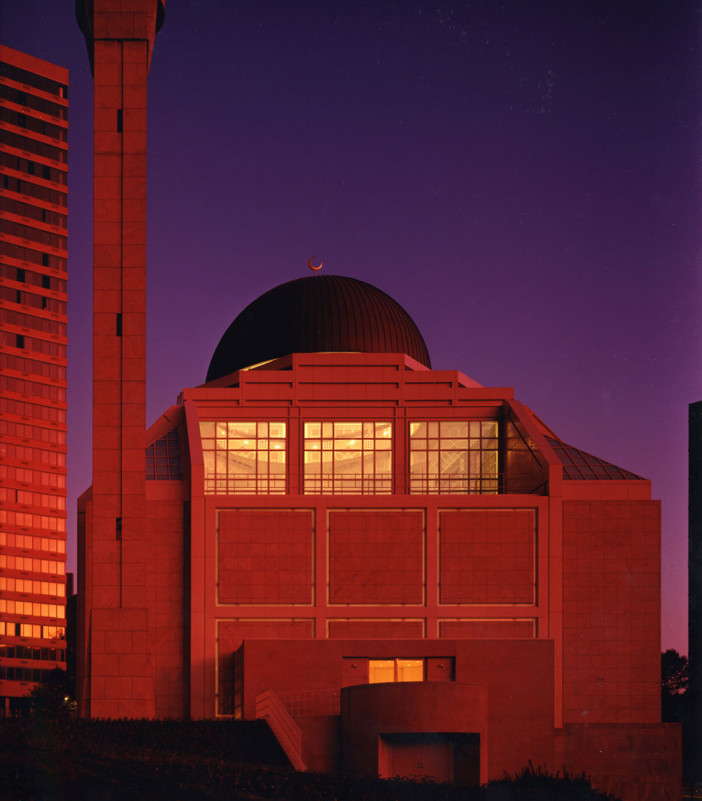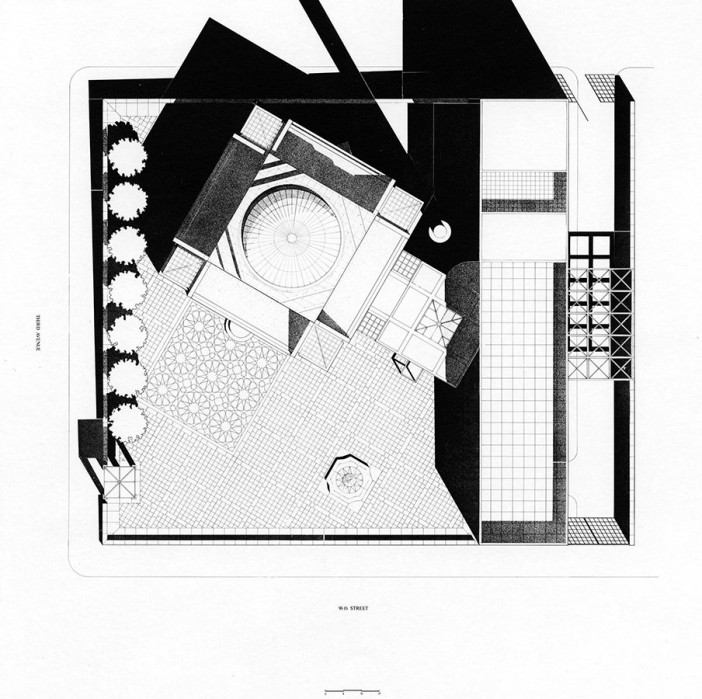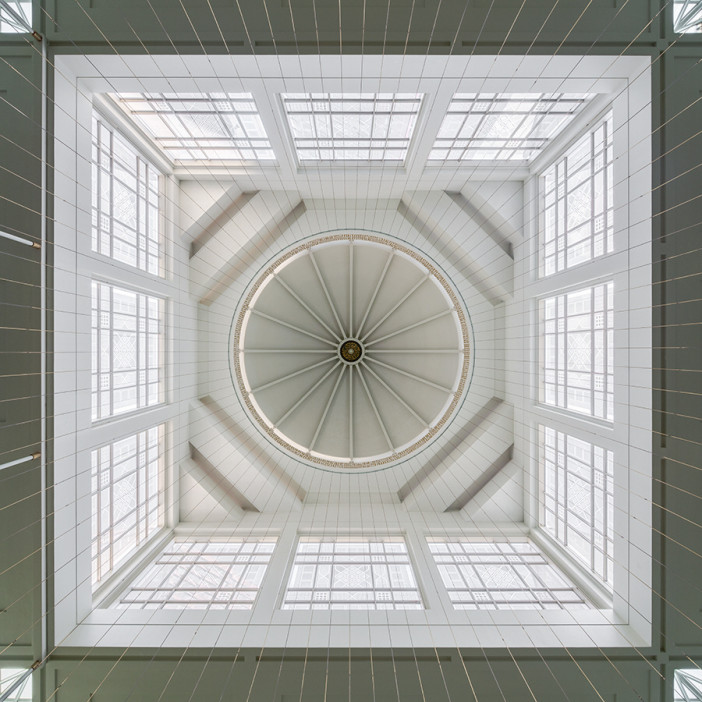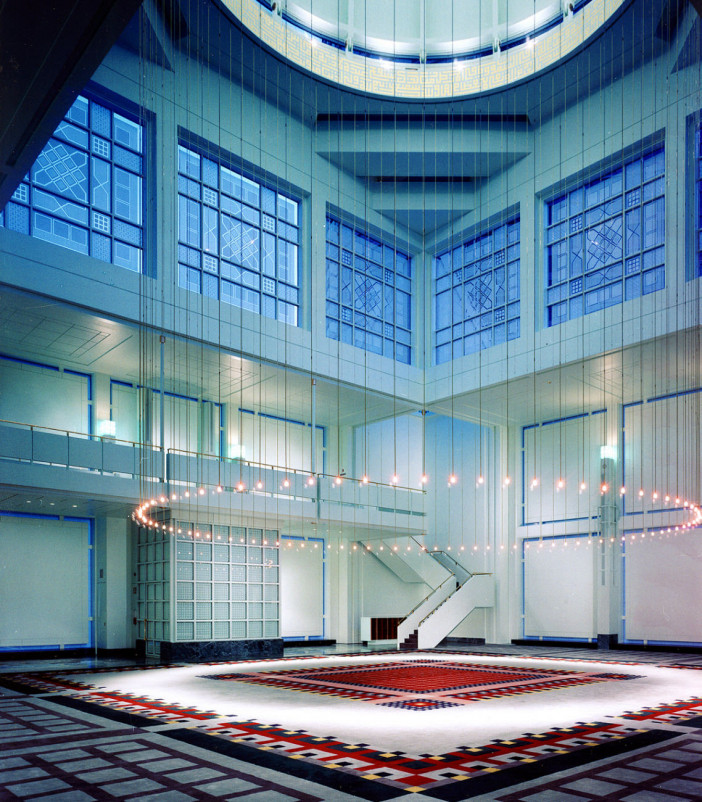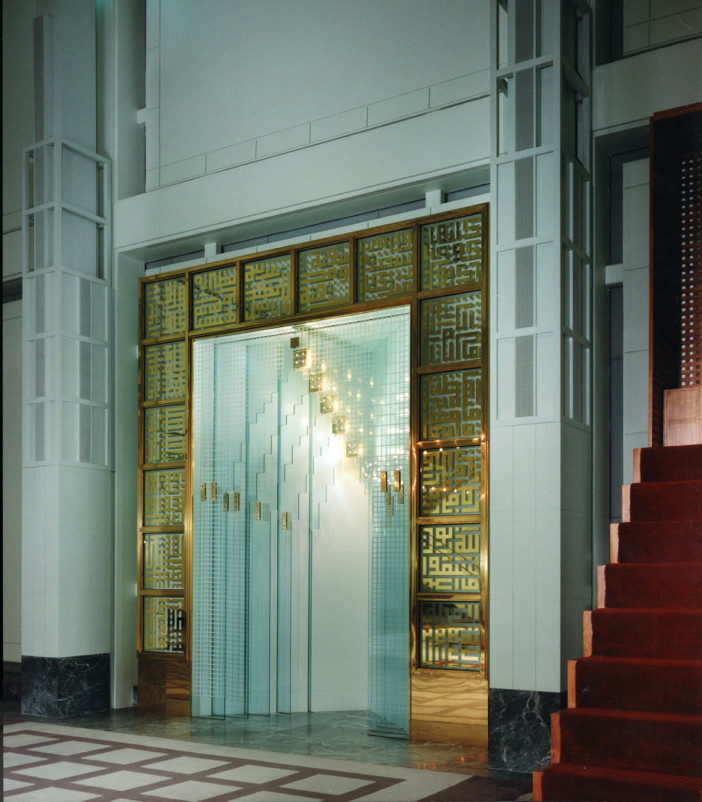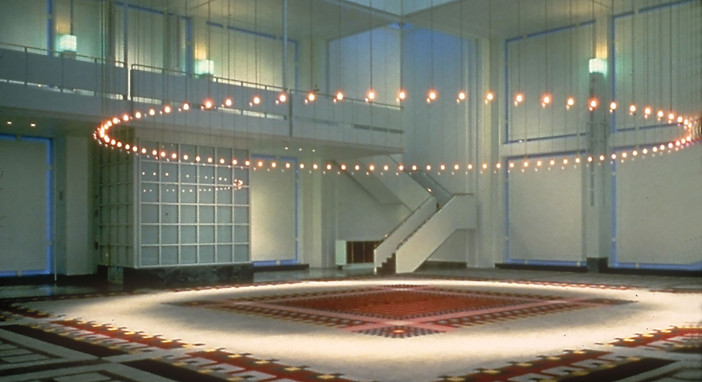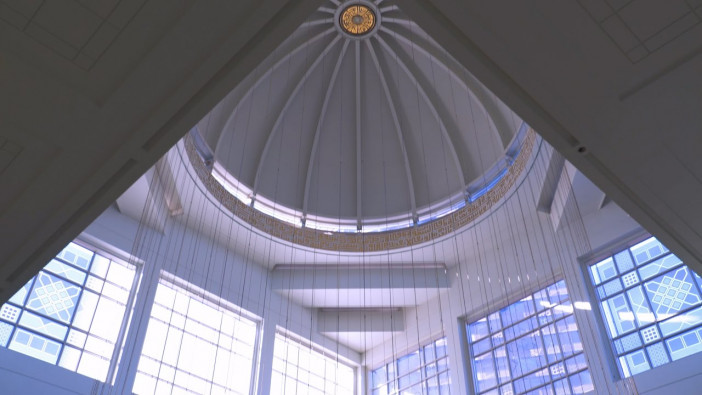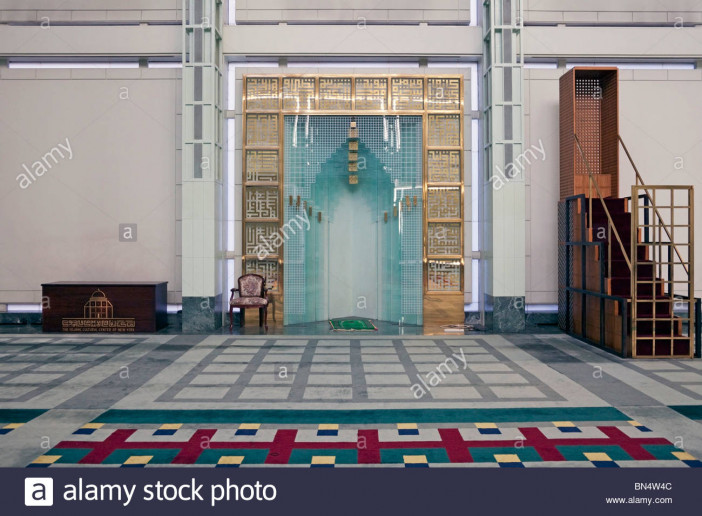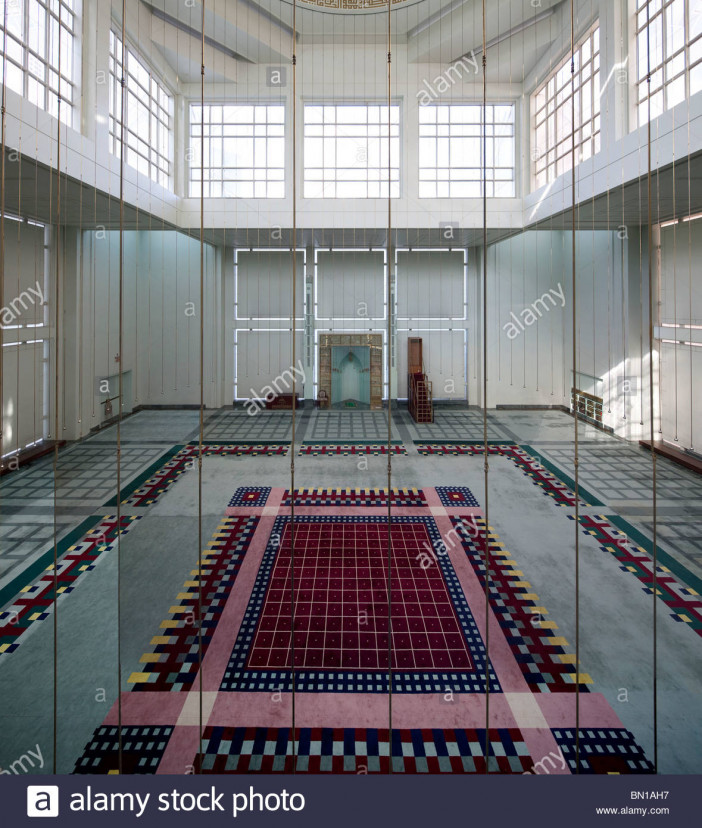Islamic Cultural Center of New York
History
Design and history
Plans for a large Islamic center in New York were originally
drawn up in the late 1960s as the first cultural center occupied a location at
1 Riverside Drive by 72nd Street.[1] The first Islamic Center started
functioning on a small scale from a modest townhouse at that address. However,
the board of trustees later aspired to build a new larger center in a way
suiting its prestigious position in the community, and to be one of the
landmarks of New York City.[1] Later, an overall project comprising a mosque, a
school, a library, a museum, and a lecture hall, were planned out. After years
of delays which included raising funds from Muslim countries, a prolonged
process of relocating tenants, and the eventual demolition of the buildings on
the site; construction of the Islamic Cultural Center began in October 1984.
Construction of the associated mosque began on May 28, 1987,
the day which corresponded to the end of Ramadan.[3] The cornerstone of the
minaret was laid on September 26, 1988.
Construction was delayed during the Iraqi Invasion of Kuwait
and the First Gulf War.[5] The mosque opened on April 15, 1991, for the feast
of Eid ul-Fitr.[6] In the end, more than 46 Muslim countries made contributions
toward the $17 million construction cost of the mosque.
Today, like most mosques, the mosque at the Islamic Cultural
Center of New York is oriented toward Mecca at a heading of 58°.[8]
Consequently, the building is rotated 29° from Manhattan's north-south street
grid,[9] which in turn is rotated 29° from due north-south. The precise
calculation of the direction from New York to Mecca was based on the great
circle that produces the shortest distance between the two cities.[8] As with
many mosques, the direction of Mecca is marked inside by a niche on the wall,
known as the mihrab.[10][failed verification] Placed in the center of the large
room, the mihrab is ornamented with a large design. Additionally, next to the
mihrab is the minbar, which is a staircase from which the imam leads prayer.
Description
The Islamic Cultural Center of New
York is a mosque and an Islamic cultural center in East Harlem, Manhattan, New
York City, United States. It is located at 1711 Third Avenue, between East 96th
and 97th Streets. The Islamic Cultural Center was one of the first mosques
built in New York City. The mosque's older dwelling in a townhouse at 1
Riverside Drive is still in continual prayer use as a satellite location.
References
- "Islamic Cultural Center NY Background". Islamic Cultural Center of New York. Retrieved November 7, 2010.
- ^ Goodman, George W. (October 28, 1984). "Ground Broken for Islamic Center". The New York Times. Retrieved March 12, 2009.
- ^ Williams, Winston (May 29, 1987). "Amid Rejoicing, Work Begins on Mosque". The New York Times. Retrieved March 12, 2009.
- ^ Lewis, Paul (September 26, 1988). "Mosque Rising Is a First in New York". The New York Times. Retrieved March 12, 2009.
- ^ Goldman, Ari L. (December 9, 1990). "Persian Gulf Crisis Slows New York Mosque Project". The New York Times. Retrieved March 12, 2009.
- ^ Steinfels, Peter (April 16, 1991). "For New York Muslims, a Soaring Dome Is Ready". The New York Times. Retrieved March 12, 2009.
- ^ Dunlap, David W. (April 26, 1992). "A New Mosque for Manhattan, for the 21st Century". The New York Times. Retrieved March 12, 2009.
- ^ a b Tyson, Neil deGrasse. "Islamic Cultural Center of New York". Natural History. American Museum of Natural History. Archived from the original on July 25, 2008. Retrieved March 13, 2009.
- ^ Schneider, Daniel B. (October 5, 1997). "The Islamic Angle". The New York Times. Retrieved March 13, 2009.
- ^ Jews, Christians, Muslims : a comparative introduction to monotheistic religions. Denny, Frederick Mathewson., Eire, Carlos M. N., Jaffee, Martin S., Corrigan, John, 1952- (2nd ed.). Upper Saddle River, N.J.: Prentice Hall. 2012. ISBN 9780205018253. OCLC 695390082.
- ^ Perelman, Marc (November 16, 2007). "With Certain Topics Kept off Table, Rabbis and Imams Find Common Ground". The Forward. Retrieved March 13, 2009.
- ^ Ruby, Walter (April 2, 2008). "Imam Seeks 'Real Connections'". The Jewish Week. Archived from the original on May 16, 2008. Retrieved March 13, 2009.
- ^ "Shamsi Ali: The rise and fall of a New York imam". BBC News. November 2, 2013. Retrieved November 3, 2013.
Details
Drawings
Map
History
Design and history
Plans for a large Islamic center in New York were originally
drawn up in the late 1960s as the first cultural center occupied a location at
1 Riverside Drive by 72nd Street.[1] The first Islamic Center started
functioning on a small scale from a modest townhouse at that address. However,
the board of trustees later aspired to build a new larger center in a way
suiting its prestigious position in the community, and to be one of the
landmarks of New York City.[1] Later, an overall project comprising a mosque, a
school, a library, a museum, and a lecture hall, were planned out. After years
of delays which included raising funds from Muslim countries, a prolonged
process of relocating tenants, and the eventual demolition of the buildings on
the site; construction of the Islamic Cultural Center began in October 1984.
Construction of the associated mosque began on May 28, 1987,
the day which corresponded to the end of Ramadan.[3] The cornerstone of the
minaret was laid on September 26, 1988.
Construction was delayed during the Iraqi Invasion of Kuwait
and the First Gulf War.[5] The mosque opened on April 15, 1991, for the feast
of Eid ul-Fitr.[6] In the end, more than 46 Muslim countries made contributions
toward the $17 million construction cost of the mosque.
Today, like most mosques, the mosque at the Islamic Cultural
Center of New York is oriented toward Mecca at a heading of 58°.[8]
Consequently, the building is rotated 29° from Manhattan's north-south street
grid,[9] which in turn is rotated 29° from due north-south. The precise
calculation of the direction from New York to Mecca was based on the great
circle that produces the shortest distance between the two cities.[8] As with
many mosques, the direction of Mecca is marked inside by a niche on the wall,
known as the mihrab.[10][failed verification] Placed in the center of the large
room, the mihrab is ornamented with a large design. Additionally, next to the
mihrab is the minbar, which is a staircase from which the imam leads prayer.
Description
The Islamic Cultural Center of New
York is a mosque and an Islamic cultural center in East Harlem, Manhattan, New
York City, United States. It is located at 1711 Third Avenue, between East 96th
and 97th Streets. The Islamic Cultural Center was one of the first mosques
built in New York City. The mosque's older dwelling in a townhouse at 1
Riverside Drive is still in continual prayer use as a satellite location.


